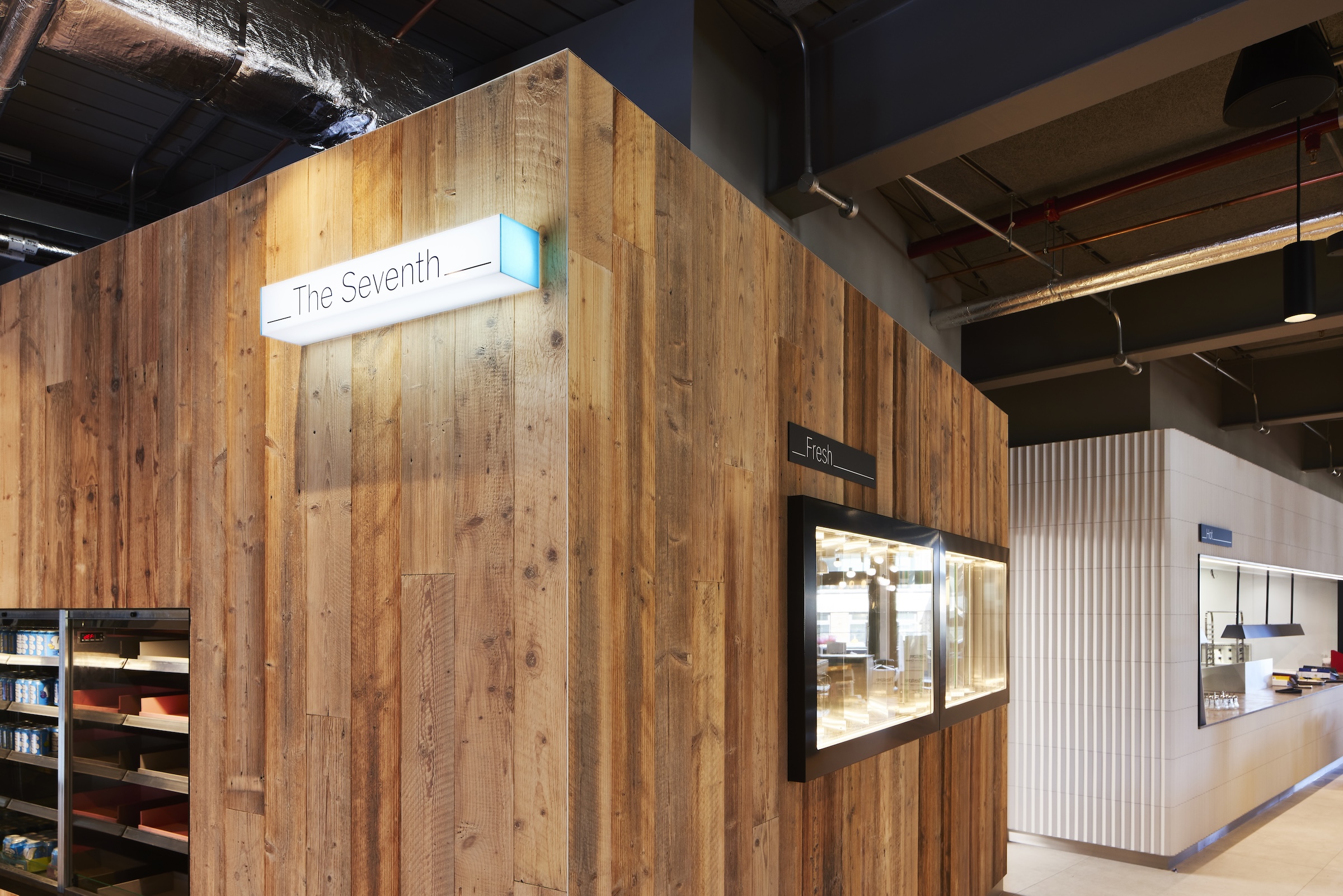
JOURNAL
Using First Principles Thinking
to transform your office

After my interview with Simon Jordan on the podcast last week, I’ve been mulling over ‘First Principles Thinking’ when he mentioned it as one of Jump’s core approaches to a new brief. It’s one of those terms you think you might recognise, but if you’re anything like me, you need a bit of further research to fully see how it can be applied.
Once I looked it up, the concept rang a bell. I wrote a piece on LinkedIn back in 2020 called An Office with Purpose. It was early into the start of the pandemic and in the piece, I stated that we need to look at why we need an office.
I really believe we’re at a turning point, we can either go back to the way things were (which is frankly only a tiny shift on from cotton mills) or we can completely change the way we work for the better. When it comes to the purpose of your office, every business should have a different answer for this, though obviously there are likely to be recurring themes in what employees are going to need.
The biggest gaps we’ve noticed both internally and heard from clients are around the three Cs: Creativity, Collaboration, and Culture.

Creativity — This refers to the practical fact that when we aren’t working face-to-face, less bouncing back and forth of ideas happen so concepts may never reach their full potential. Plus, although we seem to be working okay within our direct teams, we’re not seeing and hearing what other departments are doing so there’s less cross-business idea pollination. Innovation is key to business success.



Collaboration — basics like the clarity of a briefing, being able to combine and complement skills, to over-the-shoulder glimpses of people’s work and the comments that follow. Learning and development in many businesses have been unintentionally put on pause. Simply put, humans are first and foremost social creatures and we miss it.


Culture — You need an incredibly robust culture to work remotely, anyone who has been able to keep even half of theirs alive should be very proud. For me, culture is achieved through a collective purpose and drive, so it resonates and grows when we’re all together in the same place.
Art and culture is at the
core of what makes us human.
How do we solve these issues? Back to First Principles Thinking. Elon Musk is a big proponent of the methodology. He’s famous for applying it to any project, First Principles Thinking stops us from going down a limited analogical thinking route.
Right now in the world of office design, it’s really tempting to think analogically as a business — to look at what everyone else wants for something to work then copy it. But that works for their business and though it might be an improvement or your current situation it’s unlikely to work for your business.
When he wanted to get to Mars he first looked into how much it would cost to buy a rocket (at the time this was $65m) but rather than barter he looked at the cost of materials (approx 2% of $65m) and what it might costs to find scientists and engineers. And rather than accept the majority of the rocket would be jettisoned then burned up on re-entry they focused on teaching the rocket to land itself. Space X has cut the price of launching a rocket by 10x.


Though good office design isn’t rocket science — where do you start finding the purpose of your office, or how do you start using First Principle Thinking?
1. Start with your Assumptions
Write down everything you are assuming about your return to work. These could be: ‘Staff want to work a three-day week which won’t work for the business; our office is too big but we can’t get out of our lease; everyone wants to work from home; productivity is down.’
“Who has ever said I wish we could spend more on a bigger office?”
Simon Jordan, Jump Studio
2. Analyse the Problem.
From your list of assumptions find the biggest issues and break them down into fundamental principles. Using the first example of staff wanting to work three days ‘there’s proof that reduced days working can benefit the business; reduced hours might mean a smaller wage bill; we can reduce the size of our office; it provides an opportunity to bring in new talent; we can reduce hours to suit families; mental health will improve; etc.
3. Start from Scratch
Imagine solving the problem as if you were starting from scratch. Forget your current office. How would you create a workplace that embraced a reduced working week. What would it look like? What work would they do in the office in the three days they’re there? What would they do at home? How do you support staff working at home?


Done right, this process will let you outthink the problem and reinvent how you work in a way that suits your business and your teams. Well designed offices pay for themselves within the first year — We regularly see projects we’ve worked on where staff start to dress better because they’re proud to have an amazing office, they have more confidence in the business, they feel their purposes are aligned, they arrange more client meetings, post redesign.
– DAN MOSCROP, FOUNDER / CREATIVE DIRECTOR

+44 (0)20 3095 9411
PODCAST ARCHIVE
LONDON
3D1 ZETLAND HOUSE, 5-25 SCRUTTON STREET, LONDON, EC2A 4HJ
BARCELONA
THE SOCIAL HUB C/ DE
CRISTÓBAL DE MOURA, 49, BARCELONA 08019



